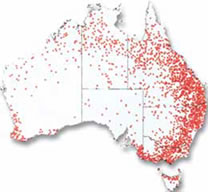History & Background
The History & Background of Beef Cattle in Australia
Beef cattle first came to
Australia with European
settlement over 200 years ago. In the last thirty years the industry has asserted
its position as a major
contributor to the Australian
economy. Initial growth
was limited by the need to
supply only the domestic
market and the industry
spent many years in the
shadow of Australia’s
successful wool industry.
The advent of shipboard refrigeration at the turn of the 20th century provided the first glimpse of the industry’s true potential. When the UK joined the EEC (now EU) in the 1960s, and withdrew as a major customer of Australian beef, the industry was forced to search for alternative markets. Subsequent growth in the US grinding beef market and the emergence of the north Asian markets such as Japan and Korea saw the true potential of the industry realised. Australia now exports beef to over 100 countries across the globe making it the world’s largest beef exporter.
A recurring theme within the beef industry has been the ability of cattle producers to breed stock that are capable of adapting perfectly to the local climate, whether in the tropical north, the temperate south or any of the many variations between. By having stock that are well adapted, production and performance can be maximised, traits that are vital in the successful production of top quality beef. These traits have similarly seen Australia become the world’s most successful exporter of live cattle.
There are currently around 27 million cattle across Australia supplying domestic and international beef and dairy markets.
